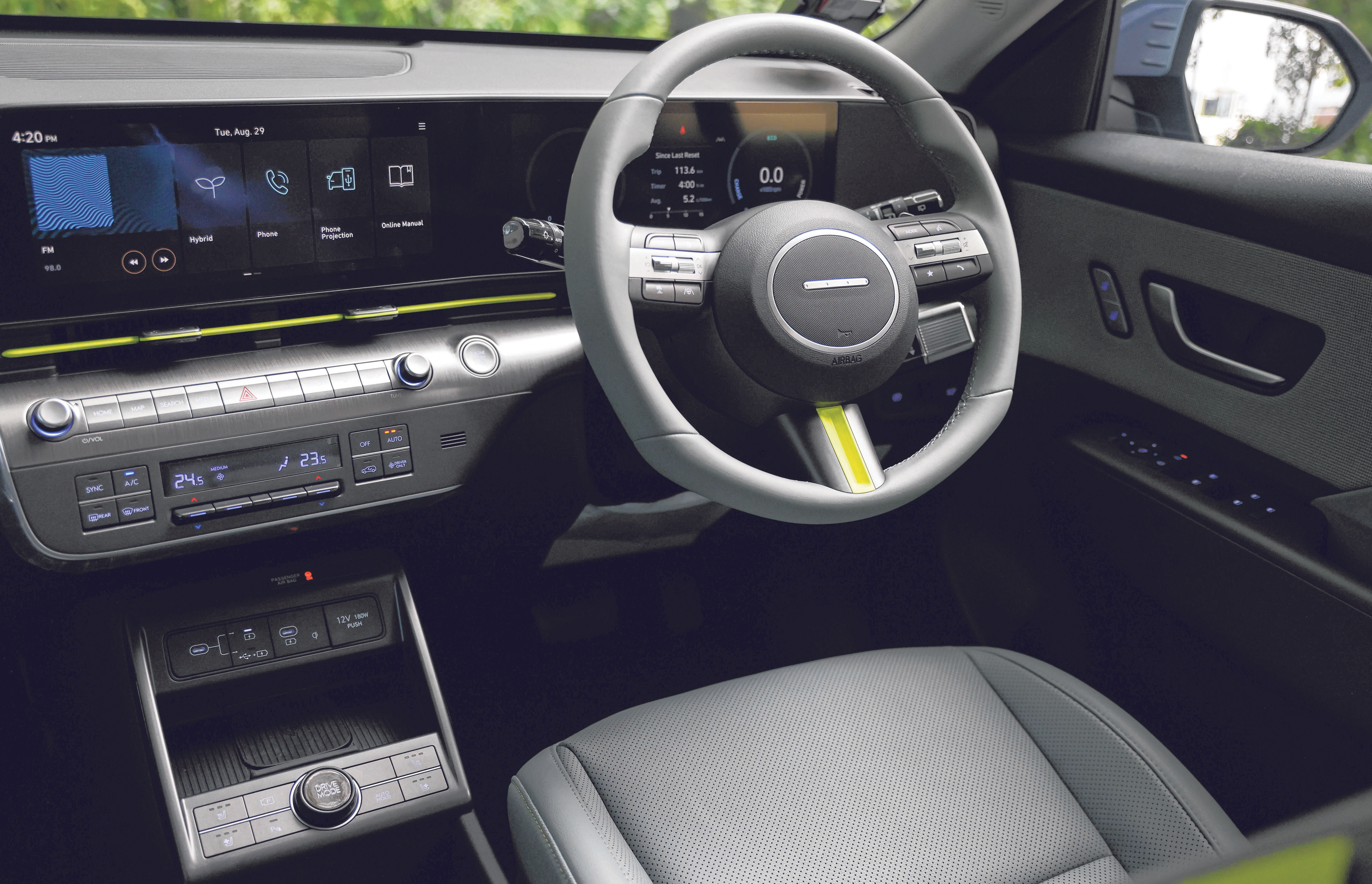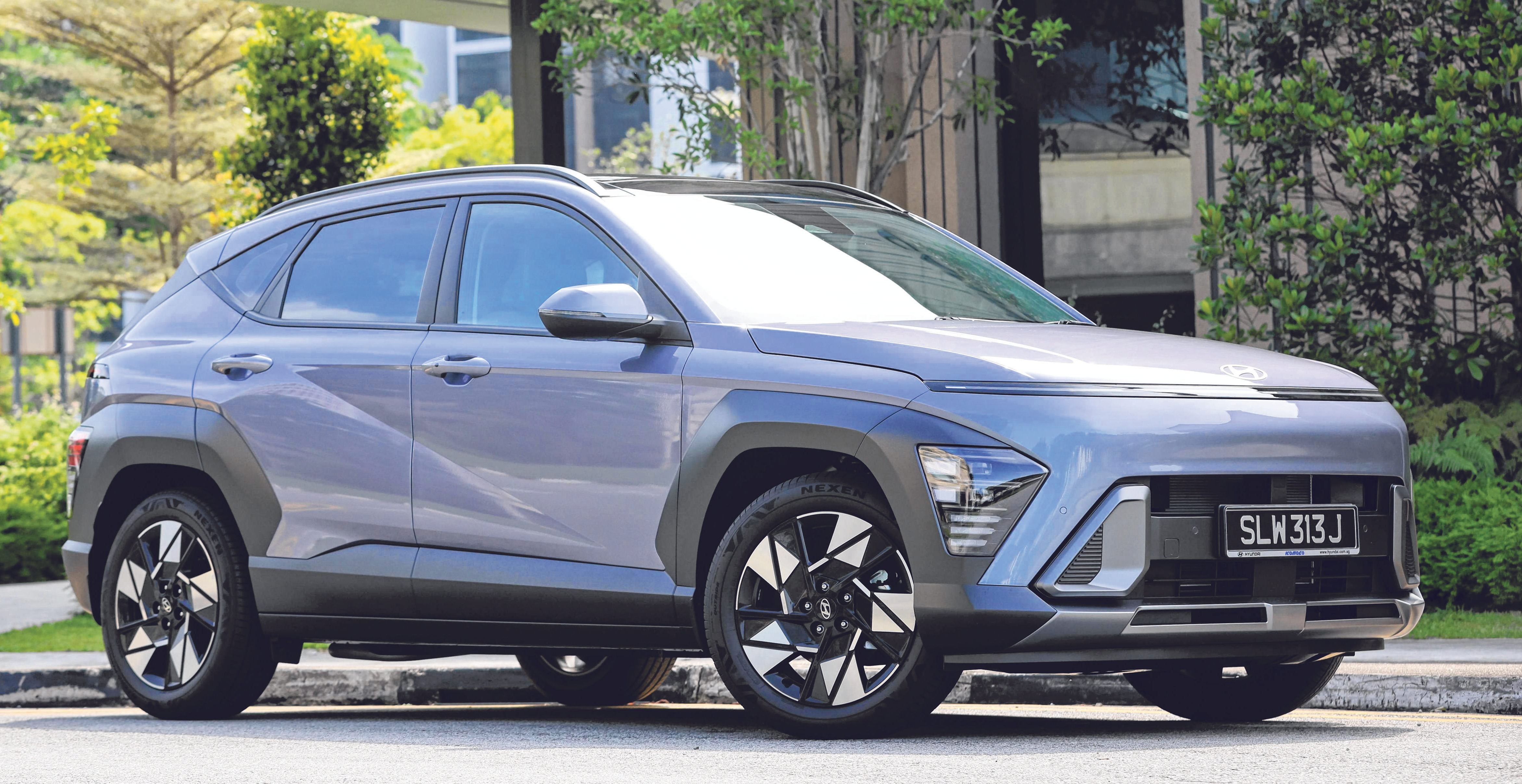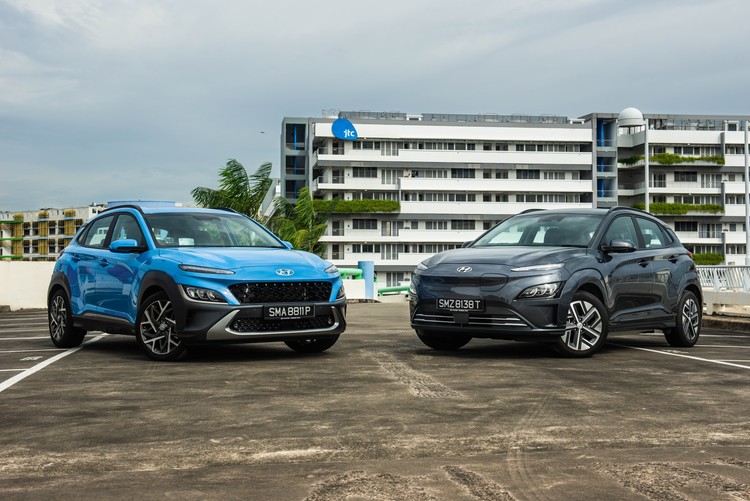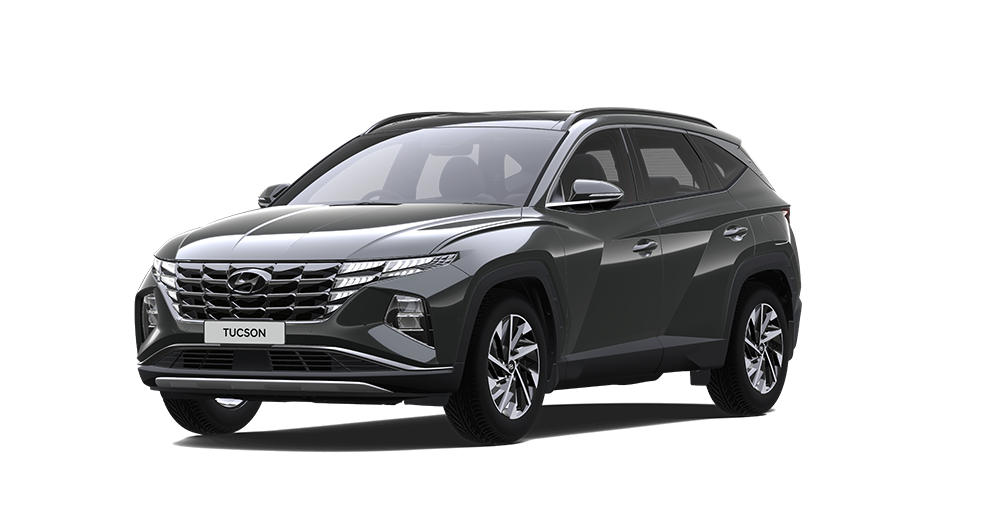If the future is electric, the new Hyundai Kona Hybrid is an excellent foretaste of things to come – especially for those who are not quite ready to embrace full electrification.
The car, which still very much depends on an internal combustion engine, has an electric motor which can drive it at crawling speeds. But that is not its unique selling point – Toyota has had that proposition for 30 years.
Rather, it is the way the new Kona Hybrid is designed and projected. It is made to look and feel like an electric car. The exterior of the compact crossover is practically identical to the new Kona Electric, which should be arriving here early next year.
In front, a thin LED strip separates the bonnet from the car’s raised bumper – a styling element from the Hyundai Staria mega-multi-purpose vehicle. The headlights are situated in the lower half, housed within black flared wheel arches which extend forward. Optically, the grille takes a drastically diminished presence.
Another thin LED strip runs across the back, with the tail-lamp clusters also housed within black flared wheel arches which extend backwards.
The car looks like it belongs in a science-fiction movie. But the changes are not confined to looks. The Kona Hybrid has active air flaps in its grille and an extended undercarriage cover to improve aerodynamics. Its drag coefficient is now 0.3 – from 0.31 previously.
Inside, a number of features are inspired by Hyundai’s all-electric Ioniq range, such as a shift-by-wire gear selector stalk mounted on the steering column (which frees up floor space). There are paddle shifters to modulate the amount of recuperative braking you wish to have. And, for the first time in a hybrid, holding the left paddle will bring the vehicle to a complete halt.

The cockpit is similar to the Ioniq 5’s, with a frameless panoramic monitor taking up more than half the length of the fascia. The infotainment touchscreen functions are on the left and instrumentation on the right.
Streamline air-conditioning vents run across the dash just below the screen, just like in the Ioniq 5.
The new Kona Hybrid is noticeably bigger than its predecessor. It is 145mm longer at 4,350mm, 25mm wider at 1,825mm and 10mm taller at 1,580mm. Its wheel-base is 60mm longer at 2,660mm. In other words, it is about the size of the Lexus UX.
The growth in size translates to more weight. Depending on equipment, the Kona Hybrid weighs up to 1,525kg – from 1,453kg previously. It also translates to more space. Boot capacity is now 466 litres, up from 374 litres. Second-row occupants get more legroom and their seats can recline in two stages for even more space to stretch.
The car’s drivetrain has hardly changed. It gets a naturally aspirated 1.6-litre engine assisted by a 32kW motor and mated to a six-speed dual-clutch gearbox. But peak power has dipped from 130hp to 129hp, while torque remains unchanged at 265Nm.
Despite this, Hyundai claims performance has improved, with the benchmark 0-100kmh sprint done in 11.4 seconds (from 11.6 previously) and a top speed of 164kmh (160kmh previously). The latter could be because of improved aerodynamics and the tyres’ taller profile – 215/55 R18 now versus 225/45/R18 before. But the better century sprint is mysterious.
Neither this car nor its predecessor will win any drag race. Yet, both are peachy in a built-up environment like Singapore’s. The new car is eminently driveable, thanks to its generous helping of torque. Besides crawling speeds, its engine goes to sleep during light-load coasting – similar to what some German mild hybrids are capable of.
This contributes to efficiency. While the manufacturer’s stated fuel consumption has worsened slightly from 4.3 litres/100km to 4.7 litres/100km, real-life consumption has improved from 5.9 litres/100km to 5.5 litres/100km. Narrower tyres and better aerodynamics may have also offset the penalty of a heavier vehicle.
Apart from a light buzz you detect whenever the engine cuts back in, the Kona is pretty refined. Its ride quality is more than decent, aided by its longer wheelbase and taller tyres. Under local conditions, it handles well enough and, more importantly, is still an easy car to operate in older multi-storey carparks.
What is hard to stomach about this second-generation Kona is its price. At $191,999, it is $70,000 costlier than it was in August 2020, when its predecessor was re-viewed. The increase has largely to do with the sharp rise in certificate of entitlement prices.
Then again, a full-electric compact crossover like the Peugeot e-2008, which is just a mite smaller, is $163,888.
Hyundai Kona Hybrid 1.6
Price: $191,999 with COE
Engine: 1,580cc 16-valve inline-4 paired with 32kW motor
Transmission: Six-speed dual-clutch
Power: 129hp at 5,700rpm
Torque: 265Nm at 4,000rpm
0-100kmh: 11.4 seconds
Top speed: 164kmh
Fuel consumption: 4.7 litres/100km
Agent: Komoco Motors
Story by: Christopher Tan
ST Photos: Ong Wee Jin
Source: The Straits Times © SPH Media Limited. Permission required for reproduction.
Test Drive: https://hyundai.com.sg/test-drive/





